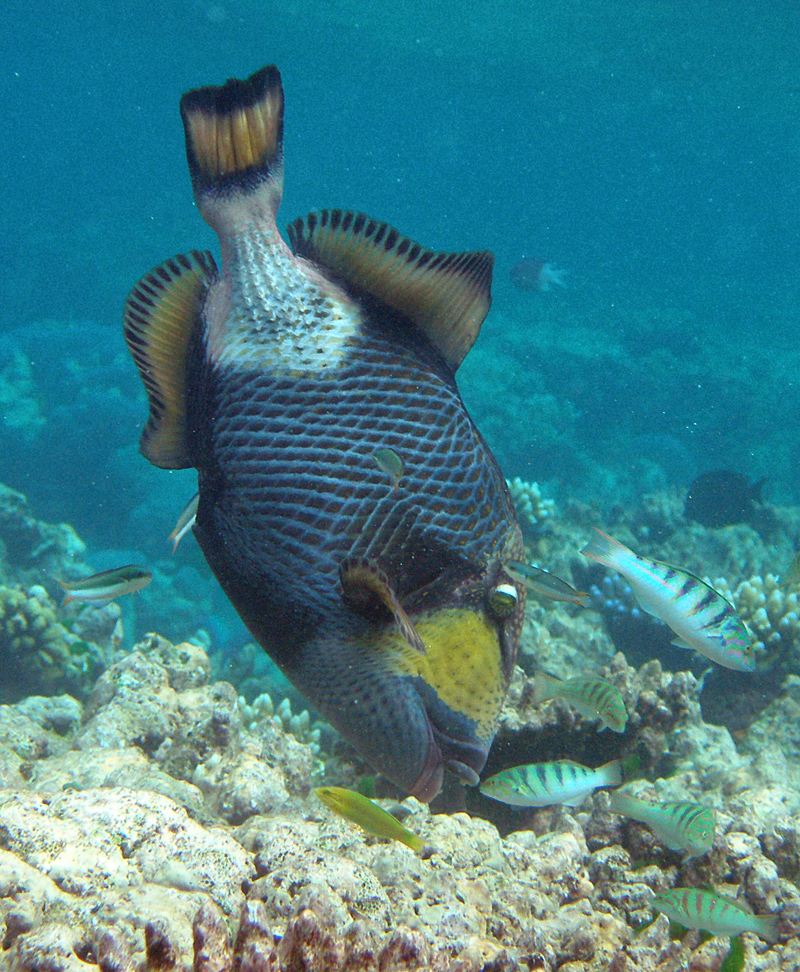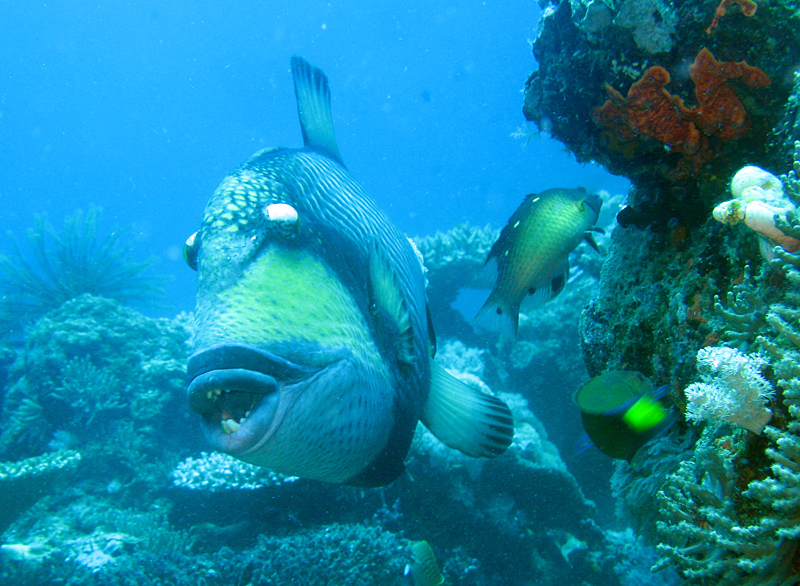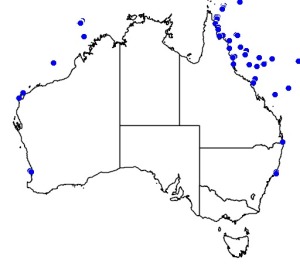
©Andy Lewis: A large Titan Triggerfish feeding, with 3 different species of Thalassoma wrasses in attendance
Colours
Distinguishing features
A medium to large sized fish with a dark grey body, a pale patch near the tail base, and yellowish brown cheeks. Swims using an undulating motion of the dorsal and anal fins. This species is the largest Triggerfish.
Size
- Up to 75 cm (Standard length)
Depth range
- Depth range data is not yet available.
Synonyms
Distribution
Distribution and habitat preferences
Rubble areas near rich coral reefs in lagoons, reef crests and front reef slopes.
Found in most reef habitats around the island.
Behaviour
Titan Triggerfishes are usually found singly, roaming slowly over coral rich areas searching for their invertebrate prey. They have powerful jaws with large teeth and can feed on a wide range of food items, including molluscs, crustaceans, worms and echinoderms.
This species is gonochoric and sexually dimorphic, with seperate sexes throught the life span and larger males. Triggerfishes have demersal eggs which they lay in a benthic nest which is closely guarded by the female for 3-5days until the larvae hatch.
Web resources
Danger
- significant discomfort - The female is very aggressive at nesting time and will bite snorkellers or divers that venture to close to the nest, resulting in a substantial wound. Be wary of this species during the warm summer months when fish may be nesting.
References
- Bean, K., G.P. Jones and M.J. Caley (2002). Relationships among distribution, abundance and microhabitat specialisation in a guild of coral reef triggerfish (family Balistidae), Marine Ecology Progress Series, 233: 263-272. LIRS catalog number 90019.
- Bray, R.A., T.H. Cribb and J.-L. Justine (2009). New observations on the genus Hypocreadium Ozaki (Digenea: Lepocreadiidae) in the Indo-West Pacific region, including the description of one new species, Zootaxa, 2110: 22-40. LIRS catalog number 1224.
- Bray, R., A. Waeschenbach, T.H. Cribb, G.D. Weedall, P. Dyal and D.T.J. Littlewood (2009). The phylogeny of the Lepocreadioidea (Platyhelminthes, Digenea) inferred from nuclear and mitochondrial genes: implications for their systematics and evolution, Acta Parasitologica, 54: 310-329. LIRS catalog number 1280.
- View all references


